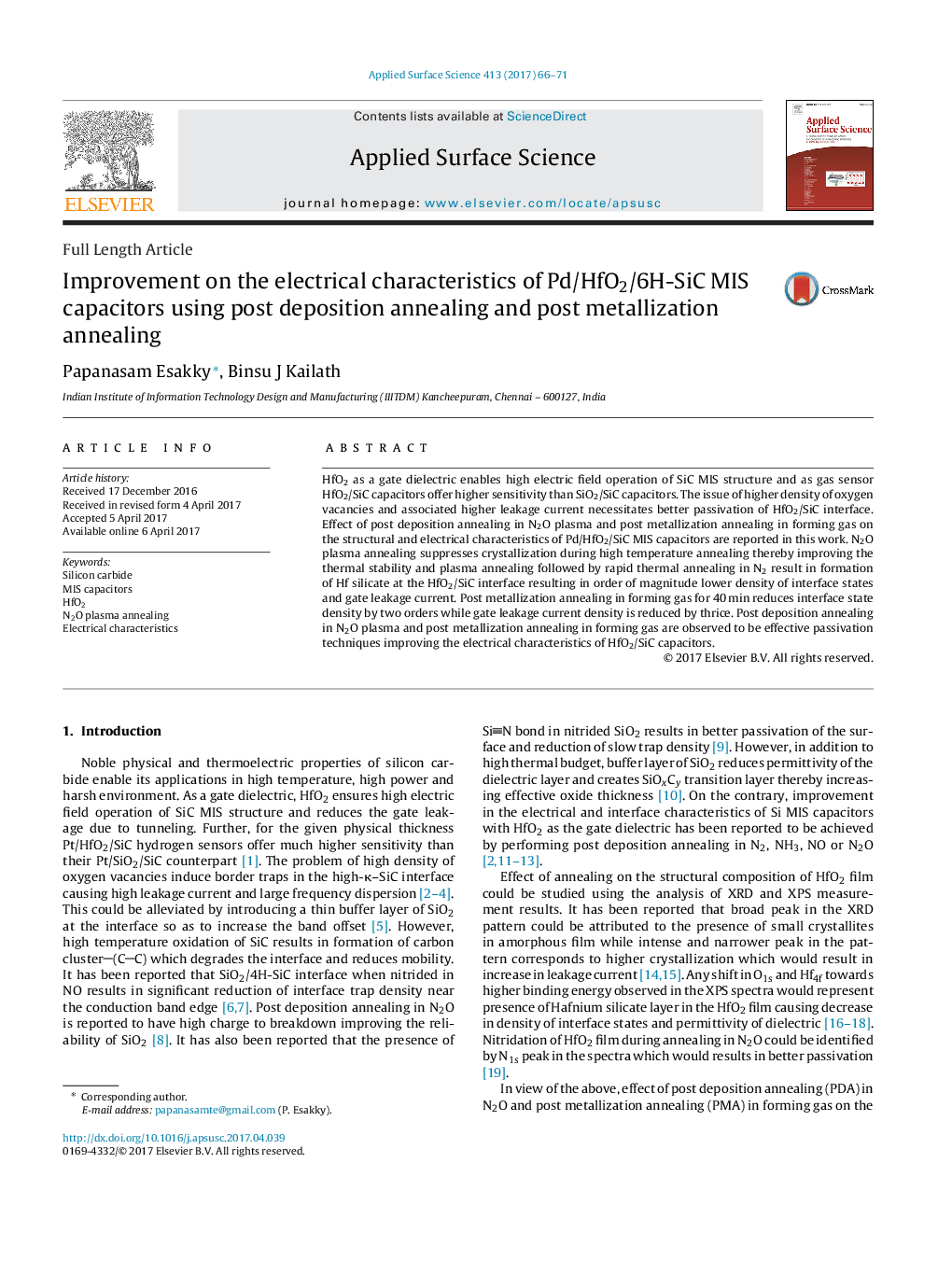| Article ID | Journal | Published Year | Pages | File Type |
|---|---|---|---|---|
| 5350941 | Applied Surface Science | 2017 | 6 Pages |
â¢Post deposition annealing (PDA) and post metallization annealing (PMA) on the electrical characteristics of Pd/HfO2/6H-SiC MIS capacitors.â¢Post deposition N2O plasma annealing inhibits crystallization of HfO2 during high temperature annealing.â¢Plasma annealing followed by RTA in N2 results in formation of hafnium silicate at the HfO2-SiC interface.â¢PDA reduces interface state density (Dit) and gate leakage current density (Jg) by order.â¢PMA in forming gas for 40 min results in better passivation and reduces Dit by two orders and Jg by thrice.
HfO2 as a gate dielectric enables high electric field operation of SiC MIS structure and as gas sensor HfO2/SiC capacitors offer higher sensitivity than SiO2/SiC capacitors. The issue of higher density of oxygen vacancies and associated higher leakage current necessitates better passivation of HfO2/SiC interface. Effect of post deposition annealing in N2O plasma and post metallization annealing in forming gas on the structural and electrical characteristics of Pd/HfO2/SiC MIS capacitors are reported in this work. N2O plasma annealing suppresses crystallization during high temperature annealing thereby improving the thermal stability and plasma annealing followed by rapid thermal annealing in N2 result in formation of Hf silicate at the HfO2/SiC interface resulting in order of magnitude lower density of interface states and gate leakage current. Post metallization annealing in forming gas for 40Â min reduces interface state density by two orders while gate leakage current density is reduced by thrice. Post deposition annealing in N2O plasma and post metallization annealing in forming gas are observed to be effective passivation techniques improving the electrical characteristics of HfO2/SiC capacitors.
